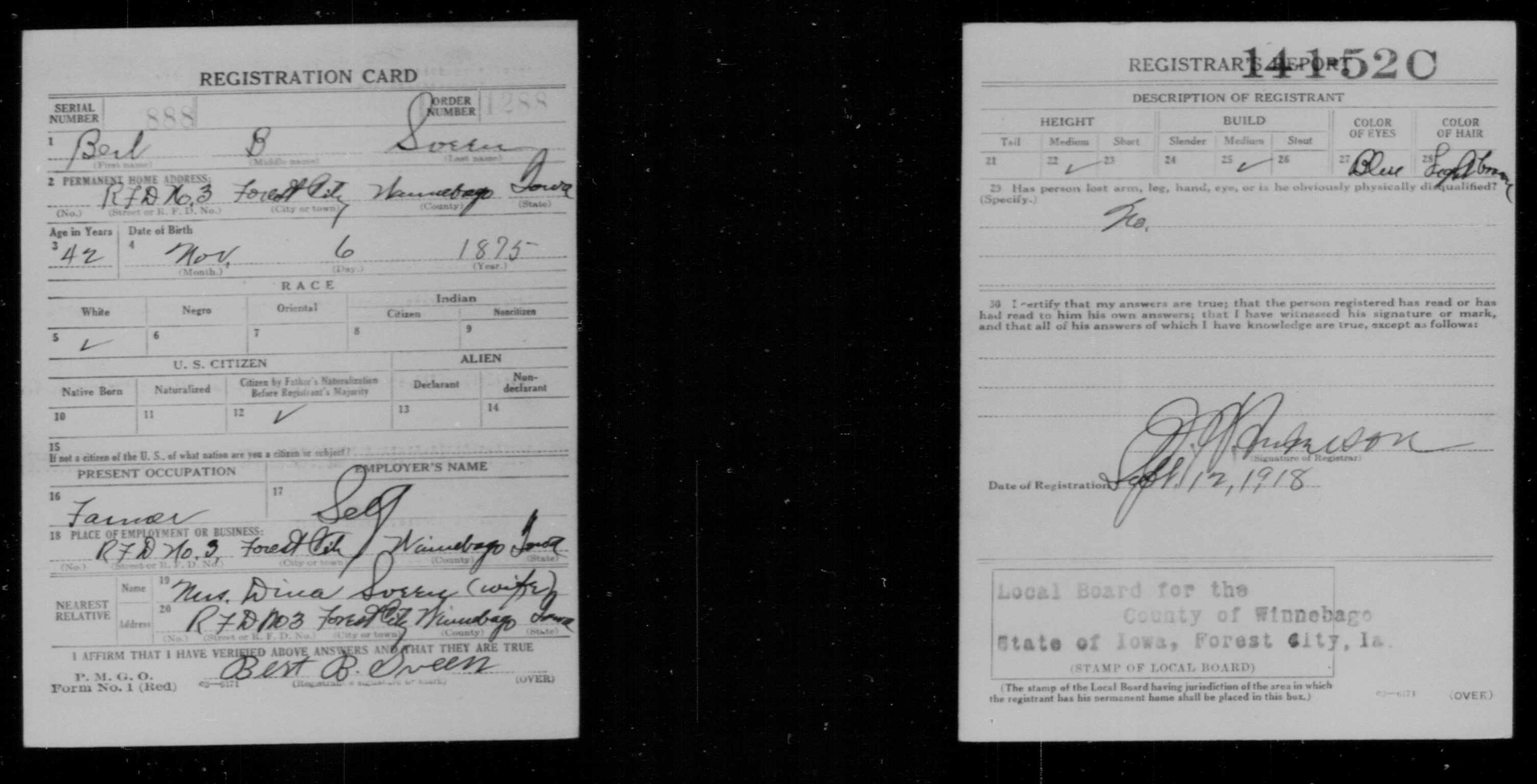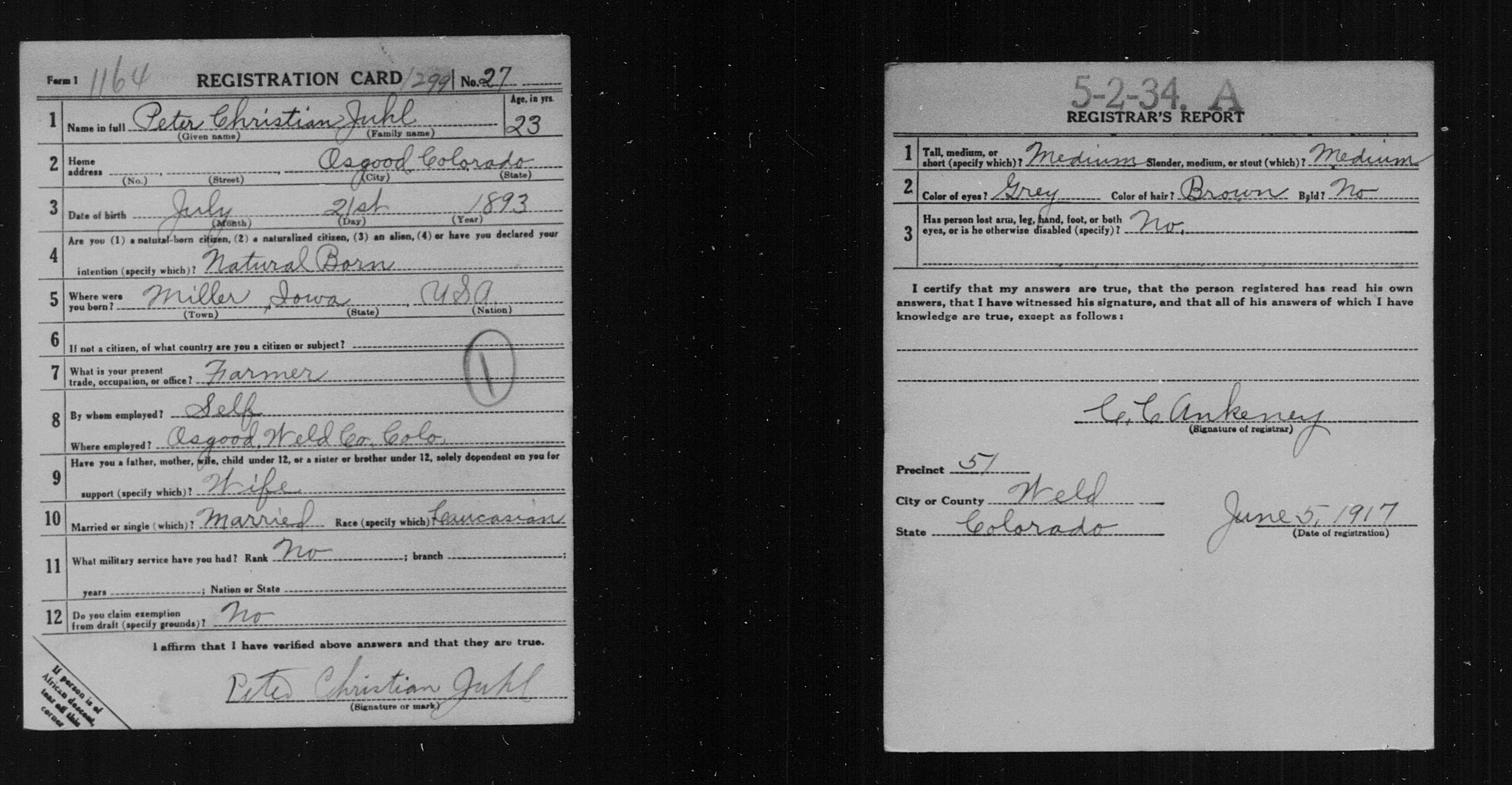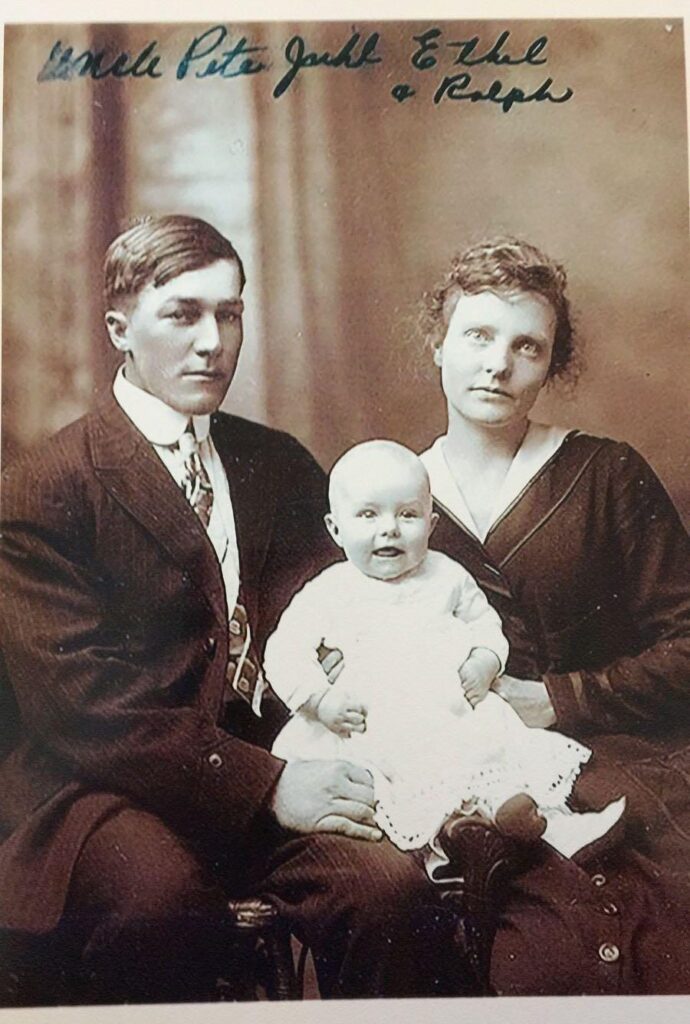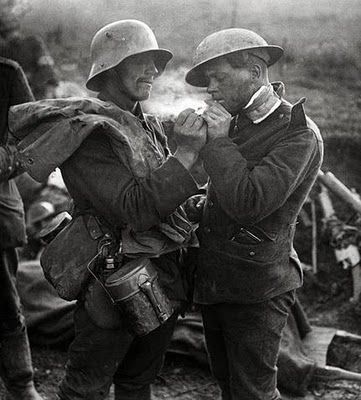The is a snapshot of one of my four great-grandfathers in 1917-1918. I wrote it upon my discovery online of their WWI draft registration cards.
The others are:
- Post-368: Great Grandfather No.1 [FFF] before draft board, 1917
- Post-369: Great Grandfather No.2 [FMF] before draft board, 1917 (this post)
- Post-370: Great Grandfather No.3 [MFF] before draft board, 1917
- Post-371: Great Grandfather No.4 [MMF] before draft board, 1917
I transcribe the cards below and provide some comments on how the war period turned out for each man. I think I can re-create, with a degree of reliability, a lot of what they were like and how they would have likely stood on the war. Some things I do not know and will pose them as questions. While I never knew any of them, I did now their children in their old age (my grandparents).
A native of Norway but in Iowa from about age 6 in the early 1880s; Farmer. Although over 40 when the US entered the war in April 1917 and thus not subject to the first call up, he was required to register in 1918. This card was submitted when he appeared before the draft board of Winnebago County, Iowa:
Registration Card
1. Name: Bert B. Sveen
2. Permanent Home Address: RFD No. 3, [i.e., rural area near] Forest City, Winnebago [County], Iowa
3. Age in Years: 42
4. Date of Birth: 1875
– Race: White
– U.S. Citizen[ship]: Citizen by father’s naturalization before registrant’s majority
– Present occupation: Farmer
– Employer’s name: Self
– Nearest relative: Mrs. Dina Sveen (wife) at RFD No. 3, Forest City, Winnebago [County], Iowa“I affirm that I have verified above answers and that they are true,”
[Signed, Bert B. Sveen]
Registrar’s Report: Description of Registrant
– Height: Medium
– Build: Medium
– Color of Eyes: Blue
– Color of Hair: Light Brown
– Has this person lost arm, leg, hand, eye, or is he obviously physically disqualified (Specify.): No
I certify that my answers are true; that the person registered has read or has read to him his own answers; that I have witnessed his signature or mark; and that all of his answers of which I have knowledge are true, except as follows: [Blank]
[Signed by the Registrar of Winnebago County, Iowa]
Date of Registration: Sept. 12, 1918
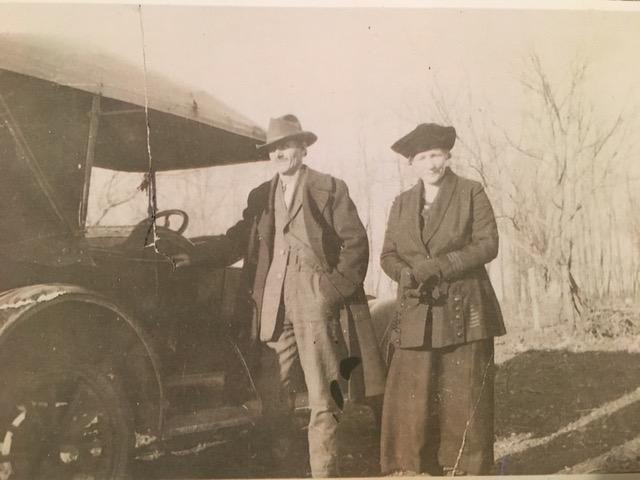
Bert Sveen [1875-1966] was not drafted and did not serve in World War I.
Why was he not drafted? What was going on in his life in the 1910s? What would have been his position on intervention in the 1914-1918 war?
Continue reading “Post-369: Great Grandfather No.2 before draft board in 1917”

